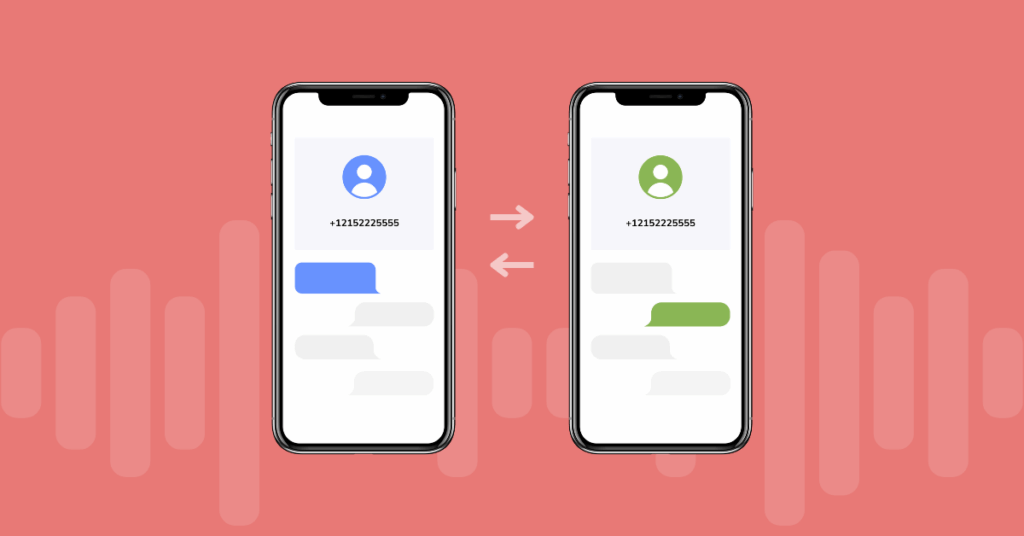
Table of contents
Communication is the process of exchanging information and ideas. Businesses must have an effective communications strategy to help minimise problems, reduce mistakes, and to satisfy customers. As part of an effective strategy, businesses try to unify different communications channels to improve efficiency, in which the voice component is increasingly powered by VoIP.
Communication is a two-way process. It’s not enough if you simply send a message. The receiver must understand the message and provide feedback to complete the communication loop. Quite often, we think another person comprehends our message because we speak the same language. However, misunderstandings can happen, and they do so quite frequently.
In an enterprise context, your goal is to minimize the effects of miscommunication. Before we get into how to improve communication within the organization, let’s take a quick look at the various categories.
Types of Conversation Based on Channel
Verbal
Verbal communication happens when you send your message verbally. Whether it is by speaking or writing it down. In an oral conversation, you are passing on information through sound. It is quick and you can get immediate feedback from the listener.
Written communication involves using language, signs or symbols. It can be printed or handwritten. You are able to rewrite your message before sending it. However, it also takes longer to get feedback on your messages.
Nonverbal
In this type of communication, you send messages without using any words. It happens when you communicate with gestures, body language, behavior, and even the tone of your voice.
Types of Communication Based on Purpose and Style
Informal
Informal communication is casual talk. This type of communication has fewer rules than others. You don’t have to worry about grammar, pronunciation, and spelling. What’s important is that the receiver understands the message.
Technical
Technical communication is quickly becoming a large part of business workflows. It is precise and governed by strict rules and conventions. White papers, presentations at seminars and conferences, and scientific reports are examples of technical communication.
Formal
Formal communication follows certain rules of content and style. It is used in a professional setting such as at in the workplace and in schools. Formal communication requires the sender to:
- Adhere to grammar rules
- Use the right spelling for words
- Use formal language
- Pronounce words correctly
- Not use slang or foul language
- Respect lines of authority
Business communication is largely formal but also has a mix of technical and informal styles. It can be further divided into external and internal communication.
From an organizational perspective, any message you send to someone outside the business is external. Internal communication happens within the business, between employees. Internal memos, reports, emails, etc. fall into this category.
What Is the Right Communication Strategy for Business?
First of all, remember that there is no such thing as a perfect communication strategy. Every business is different and so are its employees. It means that you need to find a system that works for your company. Any communication strategy has a mix of hardware, software, and connectivity.
Hardware
Once upon a time, the phone was the most commonly used hardware for oral communication. Now we have a plethora of devices to use. Most companies have desk phones, mobile devices, and computers for communication.
Software
There are various types of software ranging from voice and video apps, instant messengers, conferencing software to help business communication. Most companies will also need a PBX system to direct calls within the organization. Very few companies continue using the PSTN. Almost everyone is upgrading to VoIP phone service based on SIP.
Connectivity
Connectivity refers to the rest of the system connecting people. If your business is using a VoIP phone service, it includes at least the following:
- Internet Telephony Service Provider (ITSP)
- High-speed Internet connection
- Network infrastructures such as modems, switches, and routers
Having the right communication strategy for your business helps with minimizing problems. You don’t want miscommunication, missing messages, errors, and mistakes to happen because of the wrong tools. Some mistakes are small while others have more serious consequences. For example, what if an employee writes the wrong price when signing a contract?
An effective communication strategy helps with problem-solving, improves collaboration and productivity. It plays a major role in various departments such as sales, customer service, tech support, marketing, etc.
Tips for Improving Communication Using VoIP Phone Service
1. Selecting the Right VoIP Vendor
Managers and business owners select a VoIP phone service vendor for their business based on a number of criteria. Quite often it includes the price, features, and similar considerations. But they often forget to consider qualitative aspects.
The cheapest vendor you can get may not provide top-quality service. A vendor who offers all the features you want may not have reliable tech support. What will you do when you run into problems?
- Choose a vendor who will be your long-term partner. As your needs change, the vendor should keep up
- You rely on your communication system every day, so your vendor should be reliable
- Be prepared to pay a bit more for the features you want
- Don’t compromise on quality or customer support
- Invest in a modern system such as VoIP phone service that you don’t have to change in a year or two
2. Get the Right Tools
This is extremely important for communication. For instance, mobile connectivity is a must these days. You can outfit everyone with work phones or allow them to bring their own devices. With VoIP phone service, let your employees work remotely from home or a client site. Give them options and the flexibility to customize the system to their communication style.
You also need the right IP-PBX or hosted VoIP phone service that will work even through an emergency. Don’t lock down data in silos. An employee should be able to switch between different channels with ease. An easy-to-use interface that is unified across applications goes a long way as well.
- Enable features like automatic voicemail transcription and digital faxing to boost productivity
- The VoIP phone service should support different types of hardware and software apps
- It should include failover and backup options in case of disasters
- The system should be flexible, scalable, and easy to use
- It should integrate with other enterprise tools like your CRM system
3. Train Your Employees
When communicating with external parties – especially customers – employee training is a must. Listening is an important part of effective communication. While most people can hear well, not all of us actually listen. We’re too busy formulating our response to the other person. Public speaking and formal communication are skills that almost everyone works to improve. But remember that listening is just as – if not more – important.
The keyword for effective communication is the design principle of Keep It Simple Stupid (KISS). Complexity is the enemy of effectiveness. Any system should be as simple as possible to make it easy for everyone to use. That applies to your communication strategy as well.
Train your employees to:
- Use clear and concise language to convey any message
- Repeat the message to make sure everyone understands
- Listen carefully and understand the customer before replying
- Review customer interactions to improve for the future
- Learn from feedback and constructive criticism
4. Focus on the Important Things
All too often, businesses miss the forest for the trees. You get so bogged down with the small details that you fail to see the big picture. You have to make a lot of decisions when selecting a VoIP phone service for your business. It can be an overwhelming project, but you can always break it into smaller parts. Just make sure you don’t lose sight of the end goals throughout the process.
What does this mean? It means going for a vendor who fits your business requirements even if they are not the cheapest option. You should prepare to upgrade even before you run into problems. Lay the groundwork for the long-term future of the company.
- Do not micromanage your employees
- Don’t lose sight of the bigger picture
- Implement the foundation properly, everything else will fall into place
- Manage expectations and costs. It’s very easy to go over budget with not much to show for it
- Your communication system is an investment, not an expense. Getting the right one will generate positive returns almost immediately!
An enterprise communication system has to cater to different types of people and work in multiple situations. Every part has to work with others to provide a seamless experience. It should adapt to different communication styles and formats. In an increasingly connected world, it’s not sufficient to have different systems that cannot work together. Integration and interoperability should be your top priority.
As you can see, a large part of effective communication is getting the right system in place. Without a solid foundation, you will soon find that you have to switch your VoIP phone service vendor or upgrade your systems frequently. Invest in a modern system that will stay with your business as it grows over the next decade.
Read this post in: Español
More from the blog
Want to improve your business communication?
Unlock enterprise-class call center power at affordable prices – no hardware, no delays, no surprises!






